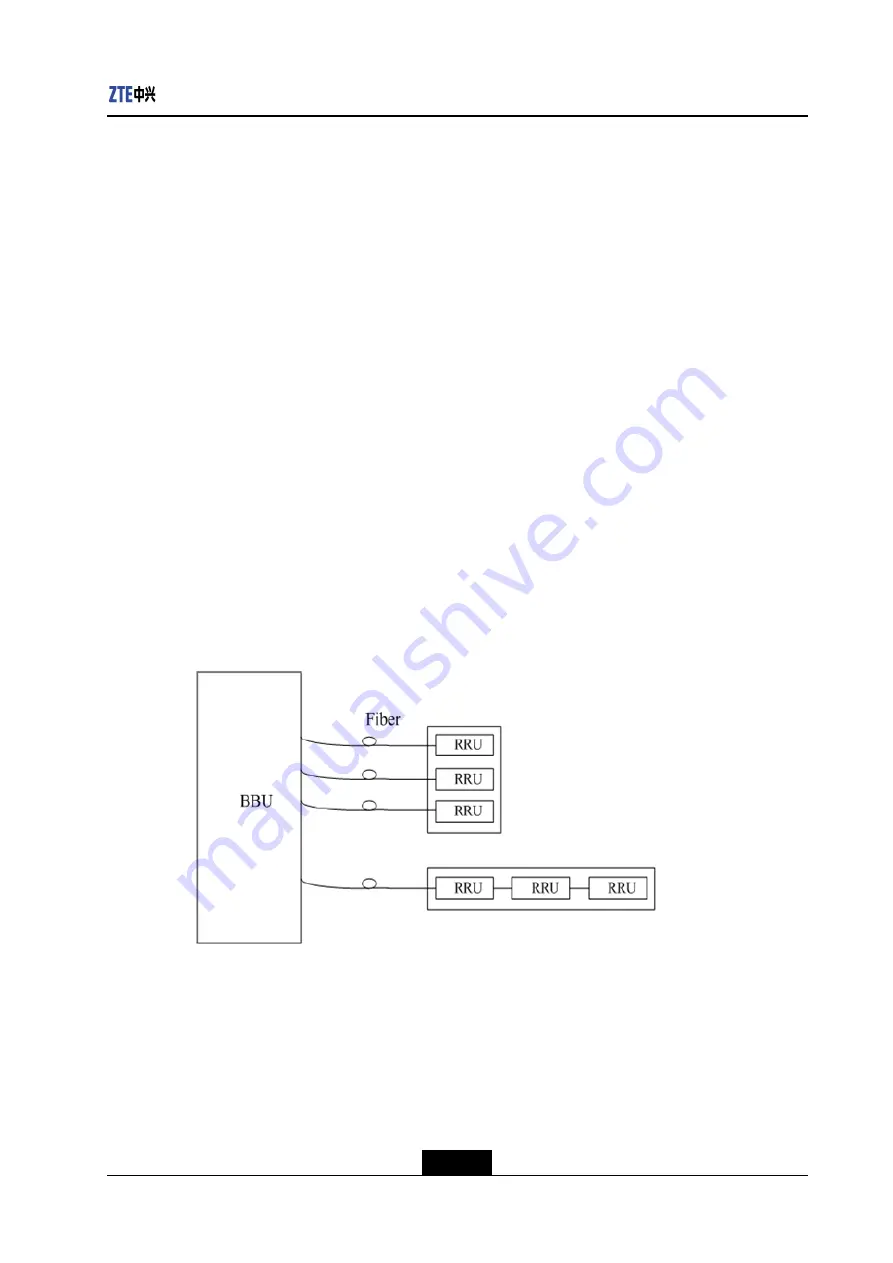
Chapter 1 Product Overview
1.
After receiving the data modulated by the baseband unit through the Common Public
Radio Interface (CPRI) interface, the up conversion is done by the TR and then the
signal is sent to Power Amplifier (PA).
2.
The PA amplifies the power of signals and then sends it to the (Duplex Filter) DFL.
3.
The FL duplexes and filters the RF signals and then transmits it through the antenna.
Reverse Flow
The reverse signal flow consists of the following.
1.
The FL filters the backward CDMA signals from the antenna, amplifies the power of
these signals before sending them to the TR.
2.
The TR performs down conversion and converts the signal into baseband digital
signals and then transmits to the baseband unit through the CPRI interface.
1.9 Networking
1.9.1 Baseband-RF Interface Networking
The ZXSDR R8860 is connected to the Base Band Unit (BBU) by optical interfaces.
It supports the Common Public Radio Interface (CPRI) protocol, and star and chain
networking modes, as shown in
Figure 1-9 ZXSDR R8860 Baseband-RF Interface Networking
l
Star networking
: the networking mode adopts point-to-point connection, so the
number of fibers led out of the baseband unit is the same as the total number of RF
modules. Although many fibers are needed, the networking mode is more reliable
than the chain networking.
l
Chain networking
: the networking mode requires fewer fibers but has lower reliability.
1-11
SJ-20100722143906-001|08/30/2010
ZTE Proprietary and Confidential
Summary of Contents for ZXSDR R8860
Page 4: ...II ...
Page 6: ...II ...
Page 8: ...II ...
















































